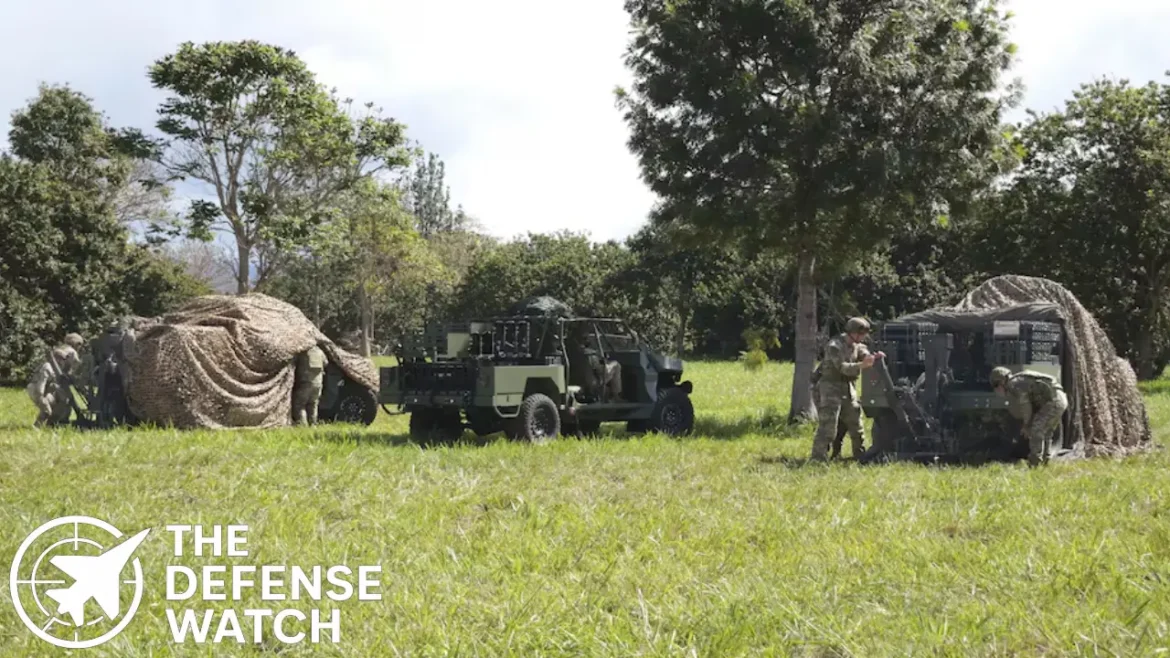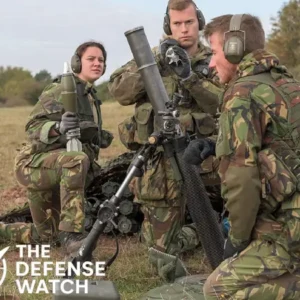The U.S. Army is advancing its indirect-fire capabilities by putting a mobile 81 mm mortar system through field trials that emphasize rapid deployment and relocation. During tests in Hawaii, soldiers from the 2nd Battalion, 35th Infantry Regiment assessed the new system’s ability to fire quickly and relocate before enemy counter-battery fire — key to what the service calls a “shoot‐and‐scoot” approach.
What’s Being Tested & Why
System overview
The system in question is the Scorpion Light 81mm mobile mortar system developed by Global Military Products in Florida. It was mounted on the Army’s new Infantry Squad Vehicle (ISV) “utility” variant for the trials.
Key capabilities include:
- Firing the first round in about 30 seconds and displacing after the final round in about 30 seconds.
- The ISV variant can carry the mortar system plus 72 rounds of ammunition.
- The system can fire eight rounds and then relocate in under two minutes, according to the manufacturer.
- It features a special baseplate enabling emplacement on “nearly any surface” and is light enough for internal or underslung helicopter transport (e.g., inside a CH-47 Chinook or sling-under a UH-60 Black Hawk).
Mobile 81 mm Mortar System – Full Specifications
- Caliber & Firepower: 81mm mortar capable of sustained rapid-fire support
- Maximum Effective Range: 6,500 meters
- Mobility / Platform Type: JLTV or M113 vehicle-mounted
- Fire Control & Targeting System: Digital ballistic computer with GPS/INS
-
Why it matters
In modern combat scenarios — especially in the Indo-Pacific and littoral zones — mobility and survivability are key. Traditional mortar teams can be vulnerable to counter-battery fire if they stay in one position too long. By enabling rapid emplacement, fire and displacement, this system aims to increase the survivability of indirect-fire assets. As one industry representative noted: “This ‘shoot and scoot’ capability is critical for survivability on a modern battlefield.”
The Trial: Hawaii & TiC 2.0
The trials took place at Schofield Barracks in Hawaii, from 20–25 October 2025, as part of the Army’s Transformation in Contact (TiC) 2.0 experimental rapid-fielding program.
Soldiers of the 2nd Battalion, 35th Infantry Regiment (part of the 25th Infantry Division) worked through simulated combat operations to evaluate the mortar system when mounted on the ISV-U (utility).
Following the trial, two of the systems will remain in Hawaii and be transported by a C-17 aircraft to participate in the upcoming Joint Pacific Multinational Readiness Center (JPMRC) exercise in November, which will include U.S. and allied forces from Singapore, Thailand, Malaysia, Maldives, France and New Zealand.
Technical & Operational Implications
Vehicle integration & transportability
Mounting the mortar on a light utility vehicle rather than a heavier trailer or fixed emplacement gives the unit high tactical mobility. The ISV-U carrier means the platform can be rapidly inserted into expeditionary and remote environments. The ability to internal-load into a transport helicopter or sling-under a rotorcraft extends reach.
Fire control & digital integration
According to manufacturer statements, the Scorpion Light includes—or can integrate with—an advanced digital fire-control system that allows for rapid target acquisition, digital input of aiming data, and linking with third-party guidance systems.
Survivability & “shoot-and-scoot”
The concept of shooting, then immediately relocating before enemy counter-battery becomes effective is not new, but the improved mobility and reduced setup/displacement time enhance this greatly. That offers infantry and light units better protection and agility in contested environments.
Deployment scenarios
Given the Indo-Pacific’s island chains, littoral zones and dispersed terrain, a mobile mortar that can be heli-lifted and deployed quickly fits emerging operational concepts (e.g., multi-domain, expeditionary fires). The upcoming multinational exercise in the Philippines and Hawaii will test such use-cases.
Challenges & Unanswered Questions
While the trial is promising, key questions remain:
- The Army has not yet announced a formal acquisition or procurement decision for the system.
- Durability and sustainment in actual combat conditions (soil, terrain, weather) still need full evaluation.
- Ammunition logistics for such mobile systems in dispersed operations may remain constrained.
- Integration into established mortar doctrine and coordination with indirect-fire networks and counter-battery systems needs validation.
Context: Modernizing Infantry Indirect Fires
Infantry mobile 81mm mortar system have long been a staple of indirect fire support for light formations. However, many traditional systems are heavy, require longer emplacement/displacement times, and are less suited to highly mobile or dispersed operations. The U.S. Army’s shift towards lighter, more agile formations (e.g., for the Indo-Pacific) has driven interest in systems like the Scorpion Light.
Moreover, as adversaries increasingly field counter-battery radars, drones and precision fires, the ability to fire quickly and move becomes a tactical imperative. The mobile 81 mm mortar trial reflects these broader modernization trends.


